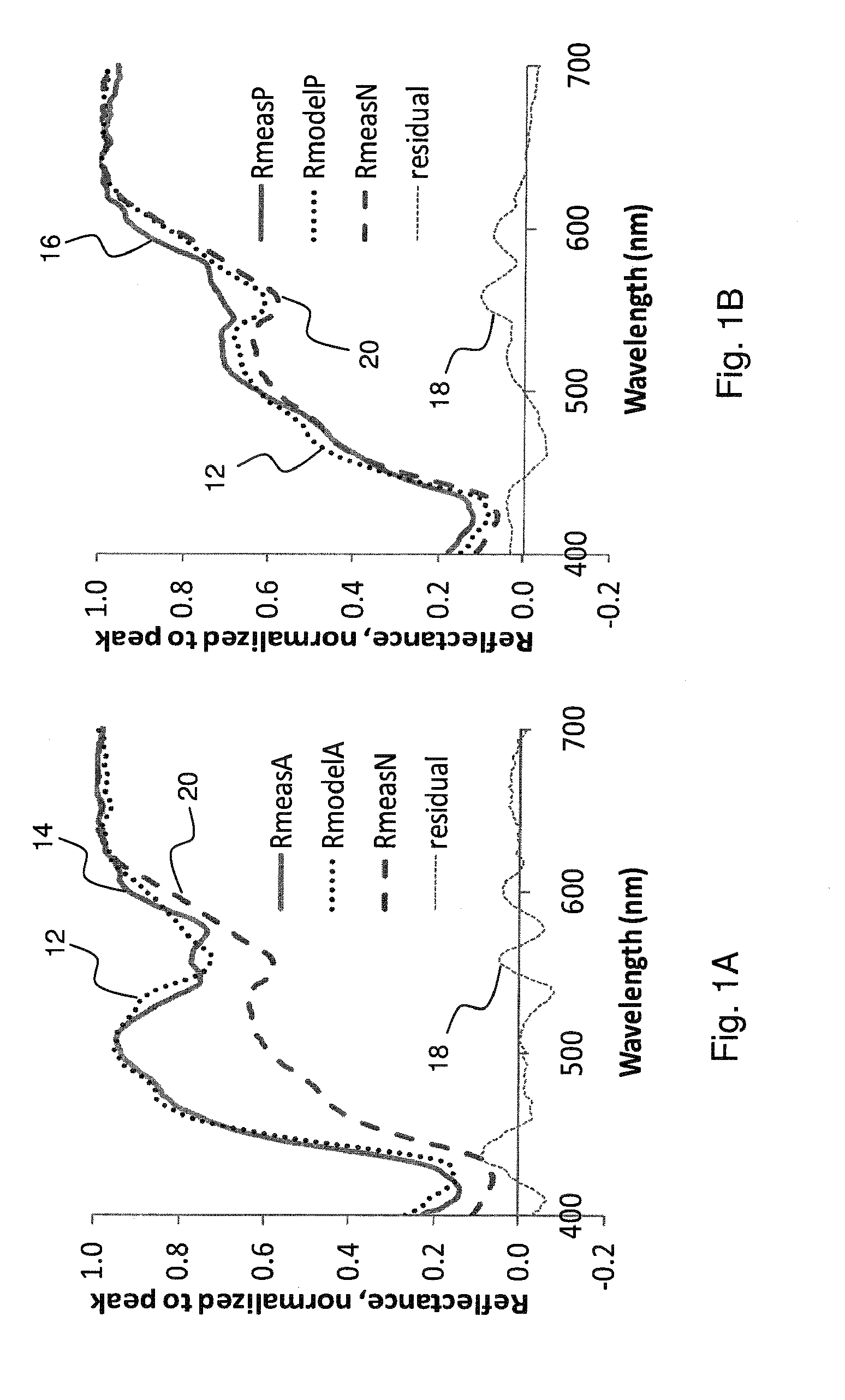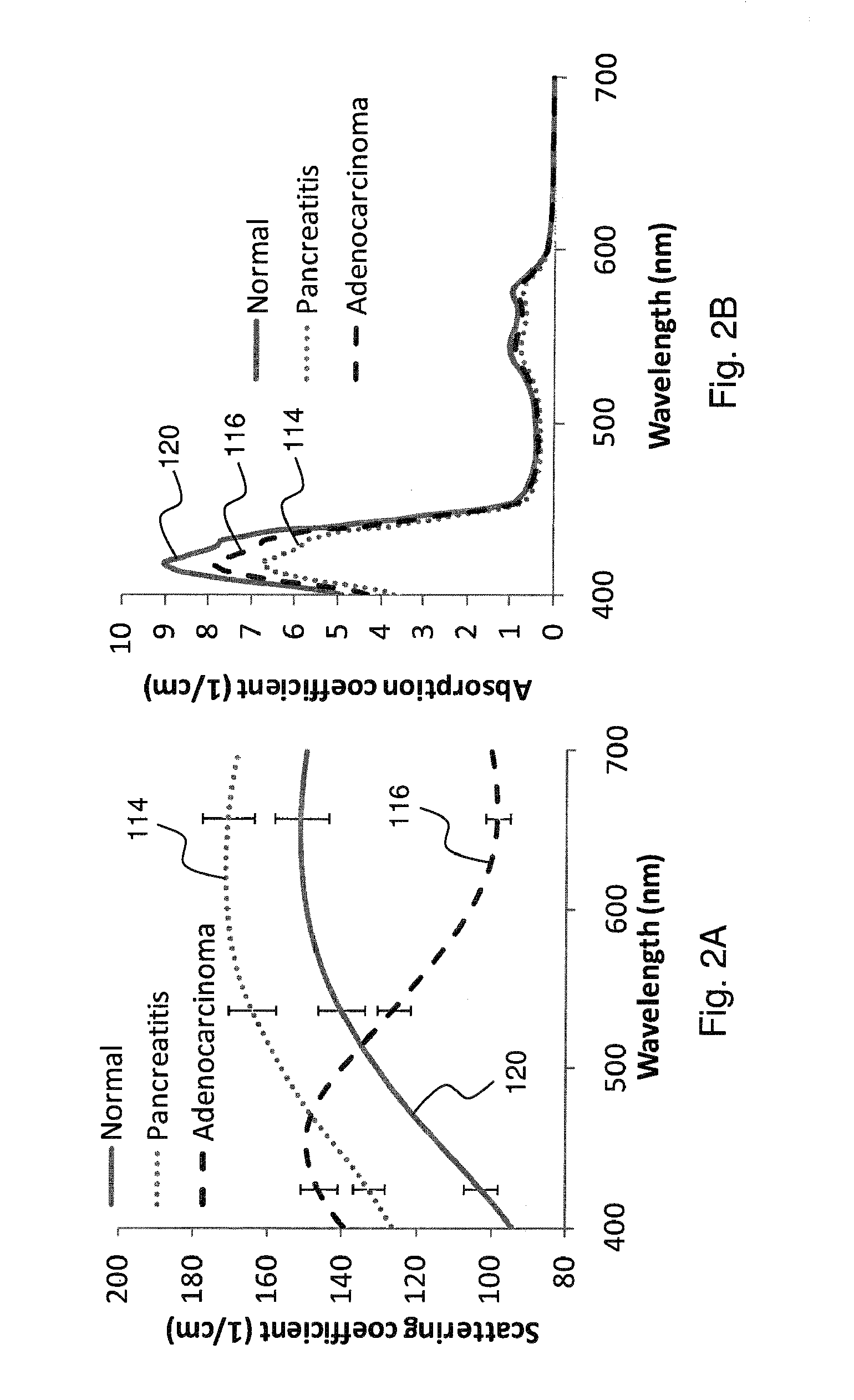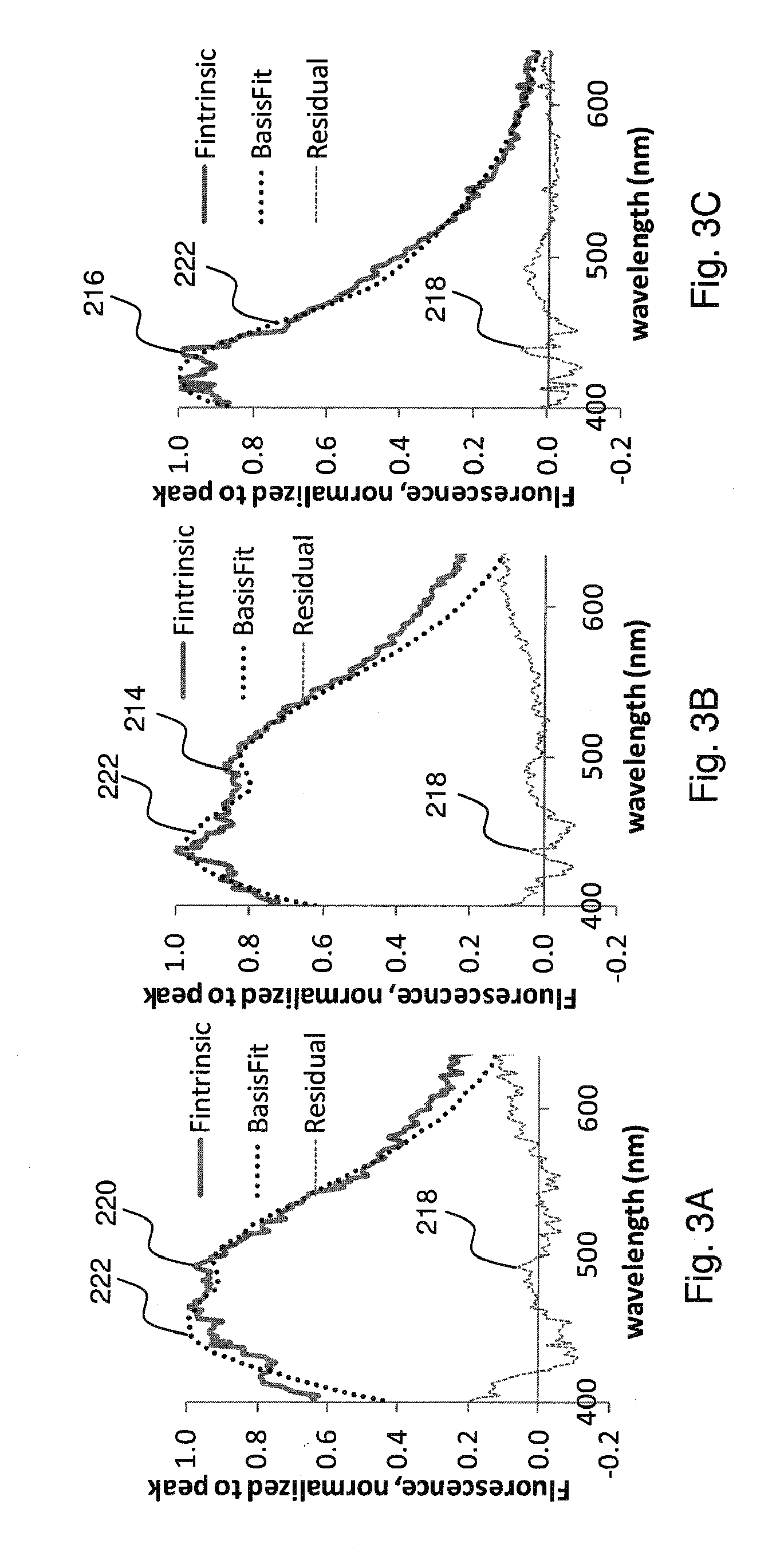Multimodal spectroscopic systems and methods for classifying biological tissue
a multi-modal spectroscopic and biological tissue technology, applied in the field of medical imaging systems, can solve the problems of small tissue diagnosis sites, relatively non-expensive, etc., and achieve the effect of small sites and non-expensiveness
- Summary
- Abstract
- Description
- Claims
- Application Information
AI Technical Summary
Benefits of technology
Problems solved by technology
Method used
Image
Examples
example 1
Malignant Vs. Benign Using Hybrid Method with Manual Thresholds Yields P(A)>0.23 and P(N)<0.26: Sensitivity=90.6%, Specificity=86.3%, PPV=74.4%, NPV=95.5%; and
example 2
Adenocarcinoma Vs. Pancreatitis Using PTI Method with Manual Thresholds Yields P(A)>0.25 and P(P)<0.5: Sensitivity=90.6%, Specificity=70.6%, PPV=74.4%, NPV=88.9%
[0382]With respect to time-resolved optical data, it was found that time-resolved optical spectroscopy has the potential to accurately distinguish pancreatic cancer from normal pancreatic tissue and chronic pancreatitis. Using the hybrid method (combining TR, PTI, and PCA) the classification results were as follows: Malignant (adenocarcinoma) vs. benign (normal and pancreatitis): Sensitivity=92.3%, Specificity=82.9%, PPV=77.4%, NPV=94.4%, Adenocarcinoma vs. pancreatitis: Sensitivity=92.3%, Specificity=73.3%, PPV=85.7%, NPV=84.6%, and Pancreatitis vs. normal: Sensitivity=93.3%, Specificity=84.6%, PPV=77.8%, NPV=95.7%. The mean lifetime parameter extracted from the tri-exponential decay model for the “With LP” data set was incorporated into a tissue classification algorithm that employed Generalized Estimating Equations to acc...
PUM
| Property | Measurement | Unit |
|---|---|---|
| illumination wavelengths | aaaaa | aaaaa |
| illumination wavelengths | aaaaa | aaaaa |
| wavelength range | aaaaa | aaaaa |
Abstract
Description
Claims
Application Information
 Login to View More
Login to View More - R&D
- Intellectual Property
- Life Sciences
- Materials
- Tech Scout
- Unparalleled Data Quality
- Higher Quality Content
- 60% Fewer Hallucinations
Browse by: Latest US Patents, China's latest patents, Technical Efficacy Thesaurus, Application Domain, Technology Topic, Popular Technical Reports.
© 2025 PatSnap. All rights reserved.Legal|Privacy policy|Modern Slavery Act Transparency Statement|Sitemap|About US| Contact US: help@patsnap.com



